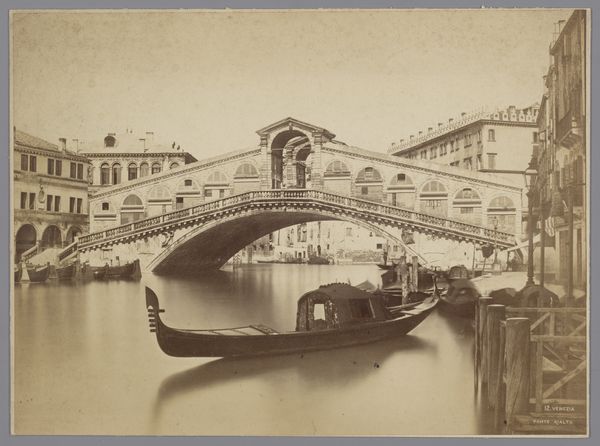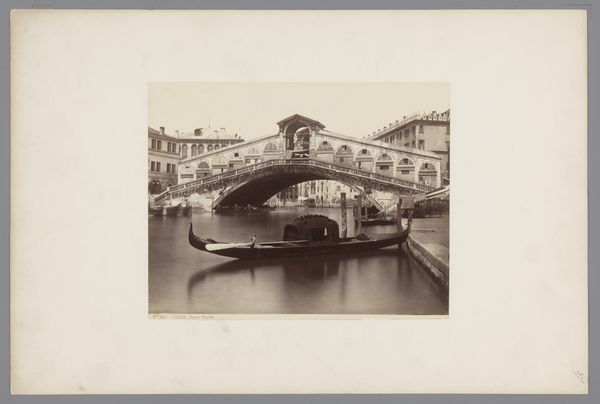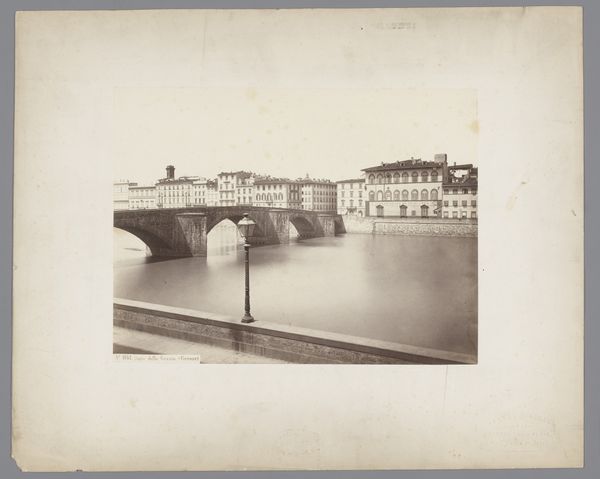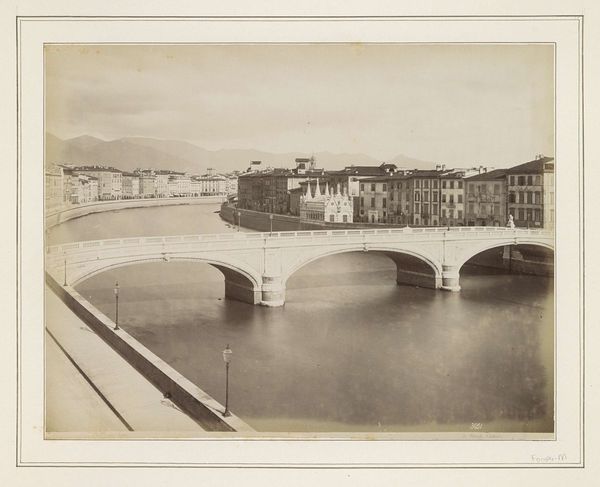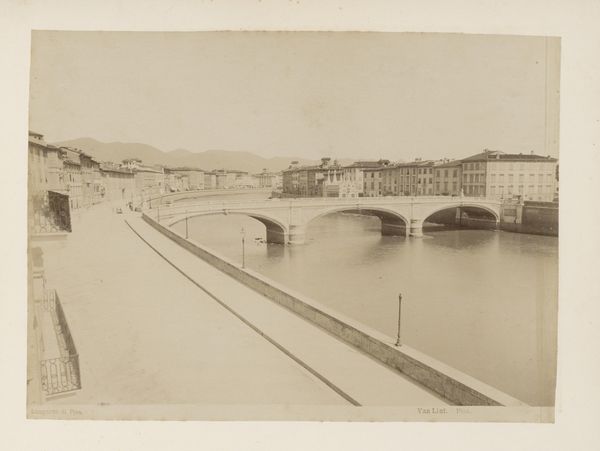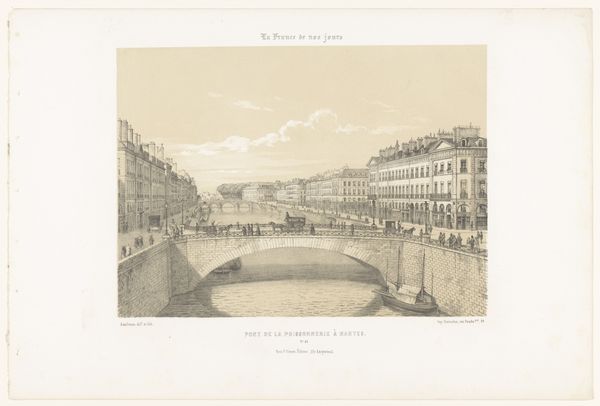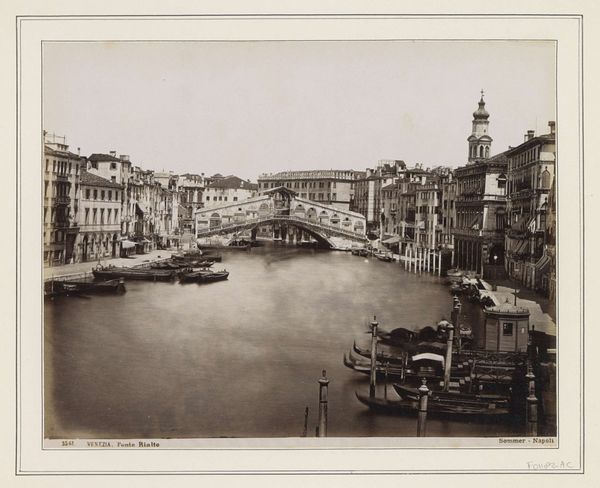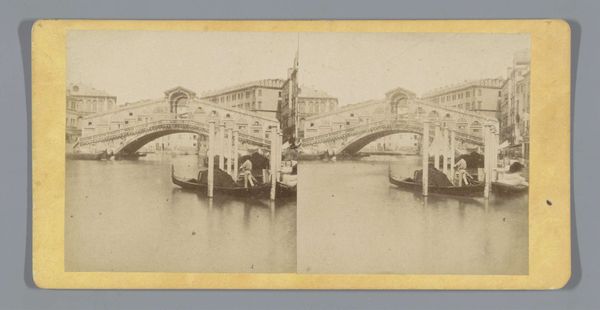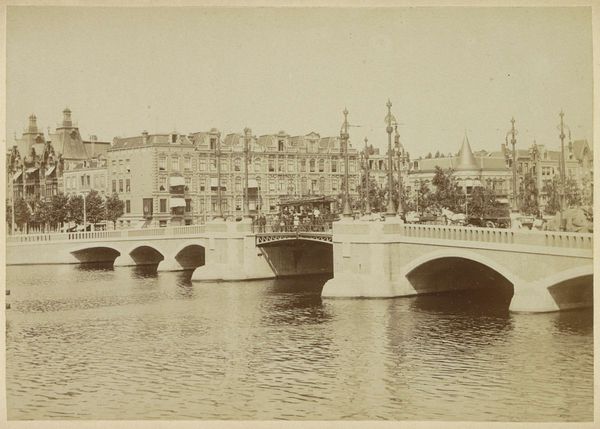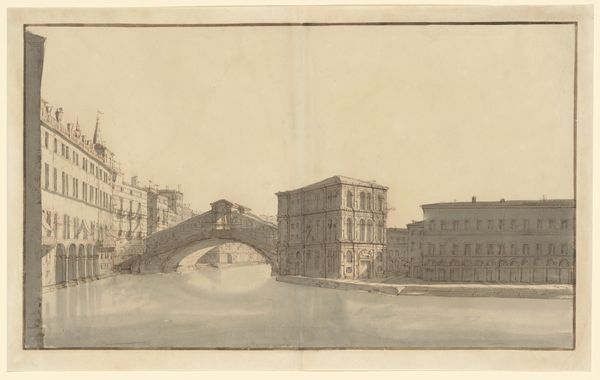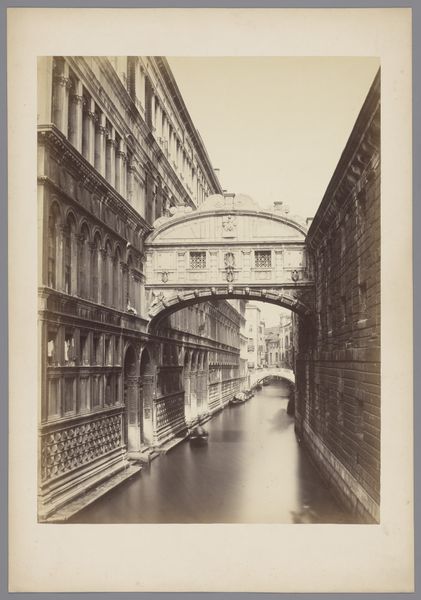
albumen-print, photography, albumen-print, architecture
#
albumen-print
#
16_19th-century
#
landscape
#
photography
#
cityscape
#
albumen-print
#
architecture
Copyright: Public Domain
Editor: This is Hermann Rückwardt's "Berlin, View of the Kurfürstenbrücke" from 1880, an albumen print that captures a Berlin cityscape. I’m struck by how…official it feels, like a document, yet still manages a certain atmosphere with its subdued tones. What's your interpretation of this piece? Curator: It’s important to view this image through the lens of Berlin's rapid transformation during the late 19th century. Photography, still a relatively new medium, played a crucial role in shaping the image of the modern city. Consider this not just as a depiction of a bridge, but as a statement about Berlin's aspirations to be a major European capital. Do you notice how the bridge itself, the Kurfürstenbrücke, is prominently featured? Editor: Yes, it anchors the entire composition, and the buildings seem to frame it. Curator: Exactly. Bridges were not only infrastructural necessities but potent symbols of progress and connection. Rückwardt emphasizes the solid, enduring nature of the architecture alongside hints of bustling city life, but note the complete absence of any signs of industrialization. He presents a polished image that subtly reinforces the idea of Berlin as a center of power and commerce, even perhaps a bit sanitized. This reflects the desire to present the city in a certain light to both its inhabitants and the outside world. Editor: So, it's less about a faithful record and more about curating a specific perception of Berlin? Curator: Precisely. It shows us the "ideal" urban landscape, reflective of its social and political ambitions, skillfully captured using emerging technologies and aesthetics. Editor: I never considered how much these older photographs served as instruments of place-making and control of a sort. Thank you for that eye-opening perspective. Curator: It is fascinating to see the photographic medium take hold in this capacity. Thinking about photographs as cultural objects, as representations shaped by societal forces, truly changes how we view them.
Comments
No comments
Be the first to comment and join the conversation on the ultimate creative platform.
